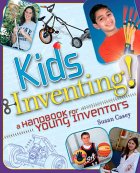I decided it was time to stop neglecting my science blog. I’m hoping to post more regularly. For now, I have a few older things I’ve done with my girls to share, and some new project ideas in the works.
When we were at a science museum once, I decided to pick up Popcorn Rock. This is a sample of Dolomite (a sedimentary mineral made out of calcium magnesium carbonate) that grows Aragonite crystals when placed in a bowl of white vinegar.
It’s probably the easiest investigation ever.
Even way easier that the sugar crystal growing experiment we did.
Just open up the package place it in a bowl (ours was glass), add vinegar and wait. For us, it took a little over two weeks to start seeing our Aragonite crystals.
Nothing really happened until the vinegar evaporated.
According to wikipedia
Aragonite’s crystal lattice differs from that of calcite, resulting in a different crystal shape, an orthorhombic system with acicular crystals. Repeated twinning results in pseudo-hexagonal forms. Aragonite may be columnar or fibrous, occasionally in branching stalactitic forms
And then, two days later:
And two days after that:
To understand what’s going on, I found this article from Educational Innovations on Crystal Growing Dolomite.
The Origin of Popcorn Rocks…
The rocks contained in this package are magnesium rich dolomite. Dolomite is an evaporative sedimentary rock made up of a variety of sediments and minerals. This dolomite is actually somewhat unique in that it possesses an amazing property that is not necessarily common to other dolomite samples. When placed in distilled white vinegar, this dolomite grows beautiful white aragonite crystals.
This characteristic was first discovered in 1981 by Mr. Richard D. Barnes, then a geology student at the University of Utah, who was working with fossil specimens of horn coral that he had collected. Typically, horn corals are preserved in limestone, a rock that is composed of calcium carbonate, which reacts with vinegar and dissolves in that weak acid so that the fossil can be removed and studied. The interesting thing about this rock is that is did not dissolve but rather produced spectacular, white, bulbous crystals, resembling popped kernels of corn. That is how these rocks came to have the commercial name, popcorn rocks . In going back to the site, Mr. Barnes determined that this rock layer was actually an ancient lagoon that had been surrounded by a coral reef millions of years ago. He attributes the unique, crystal growing property of the rock to the residual minerals deposited in the rock layers by sea grasses that were present in the lagoon at that time.





















































